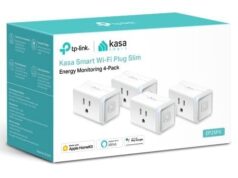
Welcome to The Cheater’s Guide to Thanksgiving. While there are plenty of tips out there for folks making scratch desserts and artisan loaves, the Cheater’s Guide focuses on the person who could use a helping hand—even from some unconventional sources. Some might call it “cheating” (like that’s a bad thing), but there’s nothing wrong with using modern technology and supermarket know-how to help you make a bangin’ traditional feast—with much less of the traditional work.
There’s no real need to make scratch bread for Thanksgiving dinner. You have way too much to do already, and unless you’re a seasoned bread-baker, making a loaf or rolls can be risky. Rise times are unpredictable, there’s limited flexibility, shaping skills don’t come overnight, and after all that, bread can still turn out badly after the bake. However, you can buy bread that comes in multiple stages of doneness—fully baked, partially baked, or ready-to-bake frozen dough—at the grocery store. Regardless of which level of packaged bread you choose, here are some easy ways to make them holiday ready.
Butter-up your fully baked rolls
There are a lot of decent-to-great quality rolls available in the market. I’m a huge fan of King’s Hawaiian rolls. Those little buns are way too tasty for anyone to resist. If you can’t find those, any small, soft buns or rolls, sometimes marketed as slider buns, will be great. Since these rolls are done, the only things that can improve them is warmth to soften any fats in the dough, and a slather of salty butter.
Unpack your rolls and nestle them into a buttered casserole dish, one where the fit is pretty snug. If you only have huge casserole dishes, make a fake one out of foil. Melt a couple tablespoons of salted butter in the microwave or in a pot, and brush the buns with the butter. Thoroughly coat the rolls in butter so the tops are gleaming, and sprinkle with flaky salt. Pop these in a 350°F oven for about five to seven minutes. You’re just warming them up. Remove them from the oven and give them a few minutes to cool. Take the warmed rolls out of the pan and tear them into individual rolls if they aren’t already. Pile the rolls up in a bread basket loosely covered with a tea towel to serve.
Crisp and brown par-baked bread
Par-baked, or partially baked, bread is how a lot of grocery stores receive their artisan loaves from their larger commissary bakeries. A partially baked loaf of bread is completely cooked, but it’s taken out of the oven maybe 90% finished. The bread is fully risen and even has beautiful open score marks, but the crust hasn’t really developed, so the loaf appears rather pale and feels soft.
The point of making bread like this is so stores can receive nearly completed bread, freeze and thaw it as needed, and crisp it in the oven without over-browning or burning the crust. You can ask the bakery section of the store to sell you their par-baked bread, but a lot of the loaves in my local ShopRite are sold in this condition already. (There are actually a lot of things your local grocery store can help you with.) This is usually done with larger loaves, like sourdoughs, olive batards, or farmhouse boules, but occasionally you’ll see par-baked rolls too.
To finish off the cooking process at home, preheat your oven to 400°F. Put the dinner loaves on a baking sheet; there’s no need to line it with anything. Slide the tray of bread into the hot oven and let it crisp up for 10 to 20 minutes, depending on how dark you like your bread. Something I like to do is swipe a salty water solution over my bread to give it a flavorful salty crust. If you want to try this, just dissolve a teaspoon of salt in a quarter cup of hot water. Use a pastry brush to brush the water over the crust of the bread. Bake it like I mentioned above. The crust will crisp and the water will evaporate leaving behind a thin coating of salt. Slice the bread and serve it in a bread basket alongside soft salted butter.
Proof and polish frozen dough
If you check the freezer section, or sometimes stand alone freezers in the aisle, you might see completely raw dough that’s already been beautifully braided or shaped into perky loaves. They are similar to how you might see pizza dough, but these breads are ready to be baked without further shaping. I always see pre-braided challah loaves in aluminum tins at my grocery store, and they normally come with directions on how to thaw, proof, and bake them.
This type of bread is lovely to bring home for a sit-down dinner like Thanksgiving because you get the added benefit of freshly baked bread aroma, which you miss out on with the other two levels of store-bought bread.
Generally, you’ll just follow the directions on the bread’s packaging. It should give you instructions on how to do the second proof and what signals to look for when the dough is ready to be baked. Usually the thawed dough will need at least 30 to 45 minutes at room temperature to proof. If it’s a soft bread, like challah or brioche, give the top of the loaf a swipe of egg wash just before baking. This egg wash will develop into a rich, shiny brown finish, and your loaf will look that much more lovely. Always allow freshly baked bread to cool completely before slicing with a serrated knife.








